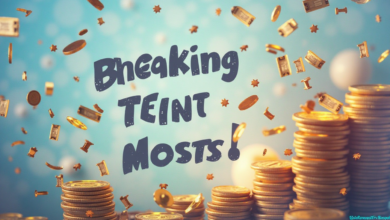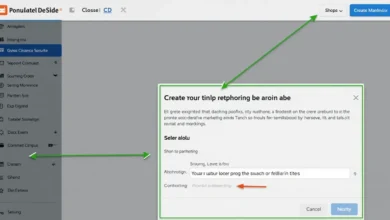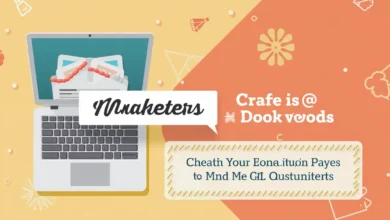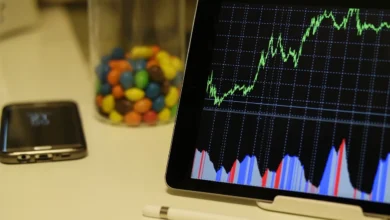Mastering the Email Marketing Customer Journey

Introduction
Have you ever wondered what makes certain email campaigns stand out? Why some emails seem to speak directly to you, leading you to click, engage, and ultimately make a purchase? The secret lies in understanding and mastering the email marketing customer journey.
Each step of this journey is crucial in transforming a simple email subscriber into a loyal, paying customer. By carefully curating the right message at each stage of your customer’s experience with your brand, you can build lasting relationships that go beyond a single transaction. This guide will walk you through each stage of the email marketing customer journey, providing you with actionable insights to help you create an email strategy that works.
Let’s dive in and explore how to turn your email marketing into a powerful tool for customer retention and growth.
Table of Contents
What is the Email Marketing Customer Journey?
The email marketing customer journey refers to the path your potential customers follow from the moment they first hear about your brand to the point they make a purchase—and ideally, beyond, to becoming repeat customers. It’s about crafting a personalized experience that nurtures and guides your subscribers through each phase of their relationship with your brand.
The journey consists of several stages, each with its unique goal. Your objective is to send the right message at the right time, addressing the specific needs and desires of your subscribers at each phase of their journey.
Here’s a quick breakdown of the stages in the email marketing customer journey:
- Awareness – When a potential customer first learns about your brand.
- Consideration – When they evaluate your products and services against others.
- Decision – When they are ready to make a purchase decision.
- Retention – Keeping your customers engaged post-purchase and turning them into loyal buyers.
In the following sections, we’ll break down these stages in detail, offering tips on how to create an effective email marketing strategy at each phase.
Stage 1: Awareness – Catching the Customer’s Attention
Understanding Customer Needs in the Awareness Stage
When customers first become aware of your brand, they are usually looking for information to solve a problem or fill a need. They may have just heard about your product or stumbled upon your website through a blog post or social media ad. The key at this stage is to educate, not sell.
In your emails, aim to introduce your brand and position yourself as a helpful resource. Focus on providing useful, educational content that addresses the problems your target audience faces.
Email Content Ideas for the Awareness Stage
At this stage, your goal is to capture your subscriber’s attention without being too sales-driven. Provide value in your content and make it clear how your brand can help solve their problems. Some types of email content that work well here include:
- Educational Articles: Share blog posts that provide in-depth knowledge on topics relevant to your audience.
- Free Resources: Offer free downloads like eBooks, whitepapers, or checklists that solve a common problem for your audience.
- Case Studies: Share how others have solved problems using your product or service, providing social proof to build trust.
By segmenting your email list and delivering content that speaks directly to the interests of each group, you increase the chances of engaging them and moving them to the next stage of the journey.
Stage 2: Consideration – Nurturing the Relationship
Building Trust with Educational and Value-Driven Content
Now that you’ve caught the attention of your subscribers, it’s time to nurture the relationship. In the consideration stage, your customers are evaluating their options, and they need more in-depth information about why your product is the right choice for them.
This stage is all about building trust. You want your subscribers to see you as a helpful resource that understands their needs and can offer the best solution. Your content should focus on educating them more deeply about your offerings, showing them the value they can expect to receive from your products or services.
Email Types and Strategies for the Consideration Stage
At this stage, your subscribers are likely to have questions or concerns about your product, so your emails should aim to answer those. Consider these types of emails to keep them engaged and interested:
| Email Type | Purpose | Example |
|---|---|---|
| Product Highlights | Showcase specific benefits | “Discover How [Your Product] Can Solve [Customer Pain Point]” |
| Webinar Invites | Educate on product usage or benefits | “Join Our Webinar: How to [Solve Problem] with [Your Product]” |
| Customer Stories | Build trust through social proof | “See How [Customer] Transformed Their Business with [Your Product]” |
These emails should focus on the customer’s pain points, and how your product or service solves those issues. The more personalized you can make this content, the more likely your subscribers will begin to see the value in what you offer.
Stage 3: Decision – Motivating the Conversion
Overcoming Objections with Targeted Content
By the time a customer reaches the decision stage, they are almost ready to make a purchase—but they may have lingering doubts. This is where you need to step in and provide that final nudge to help them feel confident in their decision.
The content in your emails should focus on addressing any objections your subscribers might have. Maybe they’re still unsure about the price, or they’re concerned that the product won’t meet their needs. In your emails, reassure them by highlighting product benefits, offering comparisons with competitors, or providing testimonials from other satisfied customers.
Conversion-Focused Email Types
Here are a few email types that can help you push your subscribers toward conversion:
- Limited-Time Offers: Create a sense of urgency by offering a time-sensitive discount or promotion.
- Personalized Discount Codes: Offer exclusive discounts based on your subscriber’s behavior or interests.
- Trial Offers or Demos: Give them a chance to experience your product firsthand without the full commitment.
Key Metrics to Track: At this stage, you should be closely monitoring conversion rates. If you notice high open rates but low conversion rates, it might indicate that your emails need stronger calls-to-action or additional reassurance to overcome doubts.
Stage 4: Retention – Keeping the Customer Engaged and Happy
The Importance of Loyalty and Retention Emails
Once a customer has made a purchase, your job isn’t done. In fact, the real work begins. Retaining customers and encouraging repeat purchases is far less expensive than acquiring new ones, and loyal customers can become your best brand advocates.
Retention emails are critical in keeping your customers engaged. These emails serve to remind them of the value they received from your product and continue to nurture the relationship, even after the sale.
Email Types to Drive Retention
To keep your customers coming back for more, consider the following types of emails:
| Retention Strategy | Example |
|---|---|
| Exclusive Discounts | “We Appreciate You: Here’s 10% Off Your Next Purchase” |
| Early Access | “Be the First to Know About Our New Product Launch” |
| VIP or Loyalty Programs | “Join Our VIP Program and Get Access to Special Perks” |
In addition to driving repeat purchases, retention emails help to establish long-term loyalty by making customers feel valued. Don’t forget to ask for feedback and reviews as part of your retention strategy, which will also help you improve your products and services.
Conclusion
The email marketing customer journey is a powerful framework for turning casual subscribers into long-term, loyal customers. By delivering the right message at the right time, you create an experience that guides your audience through the stages of awareness, consideration, decision, and retention.
Now it’s time to put this knowledge into action. Start by reviewing your current email campaigns and determine where you can improve. Whether it’s refining your messaging, personalizing your emails, or experimenting with new types of content, the goal is always to build stronger relationships with your audience.
Are you ready to optimize your email marketing strategy and create a customer journey that converts? Take the first step today and start crafting the journey your customers deserve.
FAQ Section
Q: How can I improve my email marketing customer journey?
A: Start by understanding your customers’ needs at each stage of the journey and tailoring your content to address those needs. Personalization and segmentation are key to creating a successful journey.
Q: How often should I email customers at each stage of the journey?
A: The frequency of your emails will depend on your audience and product, but typically, weekly or biweekly emails are appropriate for the awareness and consideration stages. Decision-stage emails might be sent more frequently to create urgency, while retention emails can be sent monthly or as special offers arise.
Q: What metrics should I focus on to improve my email marketing strategy?
A: Open rates, click-through rates, conversion rates, and engagement are all critical metrics to track. By understanding how your audience interacts with your emails, you can refine your approach and drive better results.



